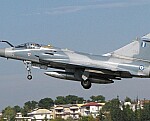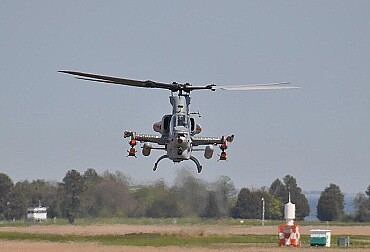Taiwan strengthens defense with F-16 Fighting Falcon amid ongoing tensions with China
Taiwan has recently enhanced its defense capabilities by acquiring the advanced F-16 Fighting Falcon jets, a significant move amidst the persistent tensions with mainland China. The delivery of these fourth-generation fighter jets, equipped with state-of-the-art technologies including AESA radars, Sniper targeting pods, Link 16 communication systems, and precise GPS navigation, underscores the robust, albeit unofficial, alliance between the United States and Taiwan.

China's Persistent Pressure and Taiwan's Resilience
Mainland China continues to exert pressure on Taiwan, rejecting its efforts to gain recognition in the international community and aiming to integrate the island nation into its territory. The international scenario, particularly in military terms, shows increased support for Taipei, primarily from the United States, followed by Japan. Taiwan's domestic industry strives for maximum self-sufficiency, producing a substantial amount of modern weaponry. The majority of Taiwanese society remains opposed to China, despite not desiring war, while pro-China movements are declining.
China's Military Ambitions and Strategic Movements
China is relentlessly modernizing its military, with a notable focus on amphibious assault ships, indicative of its strategic ambitions. Additionally, China is actively constructing artificial islands and anti-ship barriers in the South China Sea, frequently infringing upon the territorial waters of the Philippines and Vietnam. China's militaristic behavior appears concentrated on Taiwan, as it pursues primarily commercial and investment strategies elsewhere globally. The South China Sea remains a pivotal region for China, positioning it against its neighbors.
Potential Conflict and Economic Implications
The question remains whether Beijing will eventually act on its threats. The Chinese Communist leadership has an unwritten agreement with its populace to ensure their prosperity and reunify Taiwan with the mainland. However, there is a critical complication: Taipei is the world's largest microchip manufacturer, producing 98% of the global supply, including for mainland China. In the event of an attack, Taiwan would likely destroy its factories, triggering a massive global crisis, affecting even the aggressor. This dilemma undoubtedly perplexes Chinese officials.
Modernization and Enhanced Capabilities of Taiwan's F-16V Fleet
In December, Taiwan received the last of the 139 upgraded F-16V (Block 70-72) jets, marking five years since the first multi-role F-16V was delivered. The aircraft's classification has evolved from its original fighter designation to a multi-role capacity, thanks to its versatile systems, modern radar equipment, and extensive missile array. The project, costing $4.5 billion, is only the first phase, with an additional 66 new jets expected within three years.
Technological Advancements in Taiwan's F-16V Fleet
The AN/APG-83 AESA radar, a high-performance phased array radar, represents the cutting edge of radar technology, enhancing the F-16's capabilities. The Sniper advanced targeting pod autonomously identifies and tracks targets, generating GPS coordinates and guiding weapons with precision, significantly enhancing the aircraft's multi-role functionality. The Link 16 tactical data network allows secure real-time information exchange among NATO allies, a critical feature given the current geopolitical climate.
Strategic Implications and Future Outlook
Lockheed Martin introduced the F-16V variant, known as Viper, in 2012 at the Singapore Air Show, featuring comprehensive upgrades to the airframe, computer systems, and cockpit. The delivery of these aircraft to Taiwan highlights the seriousness with which the United States views the threat of a Chinese invasion and reinforces their unofficial alliance with Taipei. Support for Taiwan has grown as China continues to develop amphibious invasion capabilities. Overall, Taiwan's military modernization is progressing robustly, reflecting its strategic preparations amid the ongoing regional tensions.










